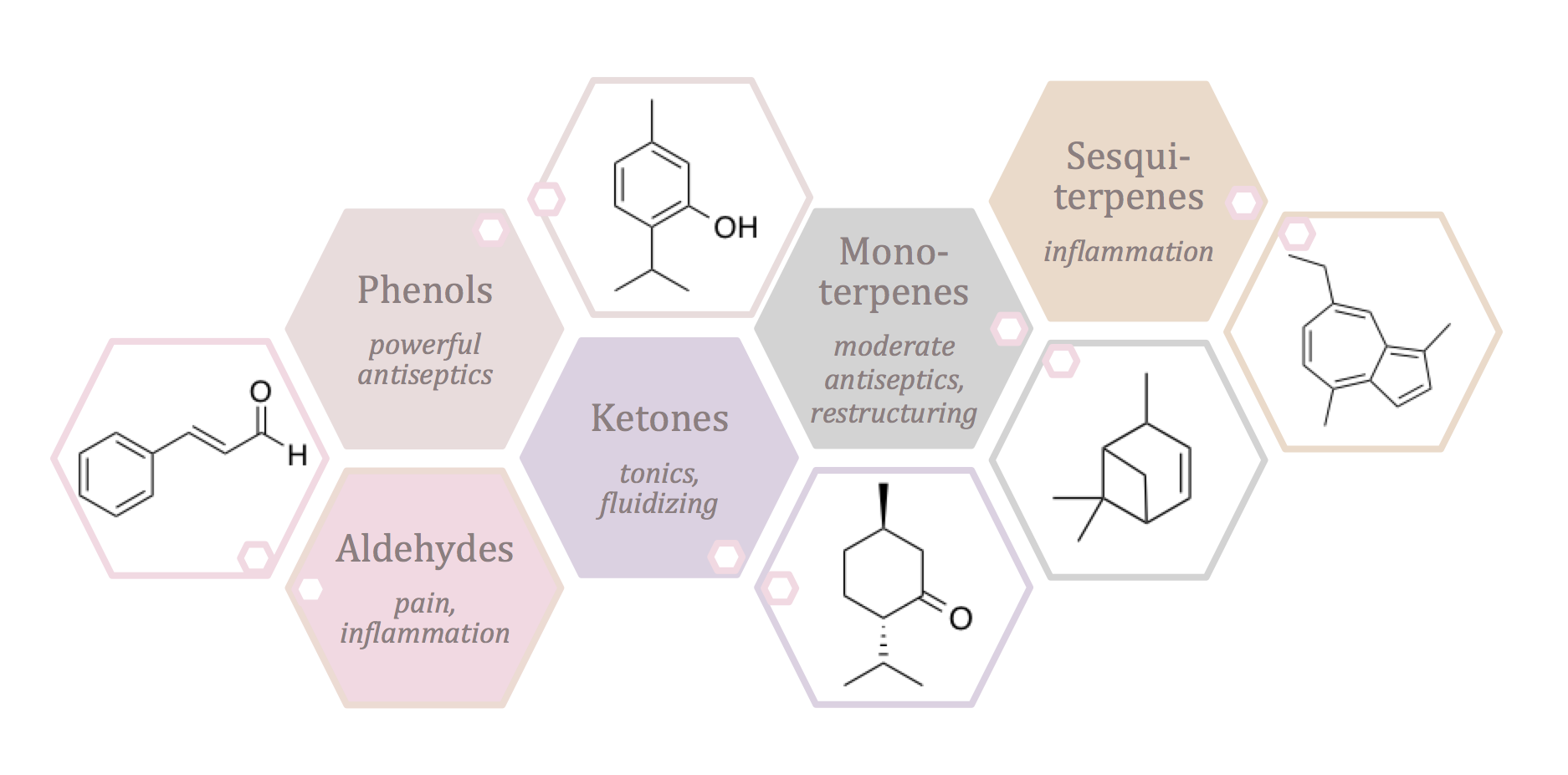General information on the science of aromatherapy
Aromatic plants have been used for centuries for medicinal, cosmetic or religious purposes. Based on their traditional use, the science of aromatherapy studies the chemical composition of essential oils in order to understand their mechanisms of action and explain their effectiveness.
Process for obtaining essential oils and floral waters
It is possible to extract the aromatic substance from most plants, whether it is a flower, fruit, bark, leaf, root, resin, etc. The plants with the highest amount of essential oil are called aromatic plants.
Essential oils are traditionally made by steam distillation. It is used for most aromatic plants and consists in immersing the plant in water that will be heated. The odorous molecules will be entrained in the water vapor and condensed to give a complex liquid extract: the essential oil. The water used for distillation can be recovered and used: it is floral water, or hydrolate, which contains some molecules common with the essential oil, but also other water-soluble molecules of the plant.
For citrus peels, another technique is used: cold pressure by which the bags containing the olfactory molecules are broken.
Role of essential oils in plants
Essential oils are composed of volatile molecules (VOCs for volatile organic compounds) belonging to different chemical classes.
In the plant, these molecules are not essential for its growth, but have important properties that allow it to interact with its environment. VOCs promote plant reproduction by attracting pollinating insects, or are involved in different chemical defense mechanisms against pathogens or herbivores through their repellent, insecticidal or antimicrobial properties.
The main families of molecules found in essential oils

Biological mode of action of essential oils
Essential oils can be used as a friction on the skin, or diffused in a room. They will therefore act differently depending on their use.
In contact with the skin, the molecules of the essential oils will cross the skin barrier and reach the bloodstream. Diffused in the air, the aromatic molecules will be inhaled and will activate particular receptors in the olfactory bulb. The use of essential oils will cause the release of neuro-messengers in the brain that will contribute to their relaxing (release of serotonin), euphoric (release of endorphins), or stimulating (release of noradrenaline) effects.
Essential oils and SHIGETA
The use of plants in various forms and uses is one of the pillars of the SHIGETA well-being method.
Each oil has its own properties. To facilitate the return to well-being, SHIGETA develops blends of essential oils that increase their relaxing, balancing or soothing properties: this is the synergy effect 1 + 1 = 3. Inspired by Provençal aromatherapy, they can be inhaled using a flavor diffuser or rubbed on certain parts of the body.
Essential oils are also present in cosmetic products, for their fragrance and the well-being they bring during application, but also for their precious biological actions.
The essential oils used and mentioned in the following articles have been selected to avoid any risk of irritation or sensitization during their use. This selection is based on the analysis of scientific articles that have proven the safety of using essential oils on large groups of volunteers.



